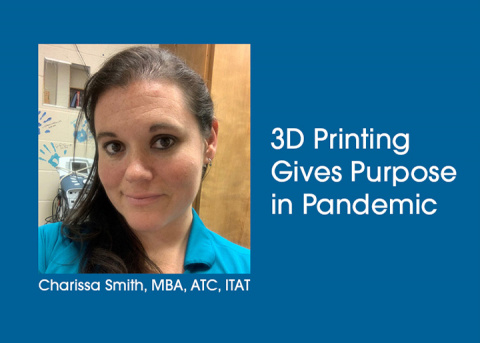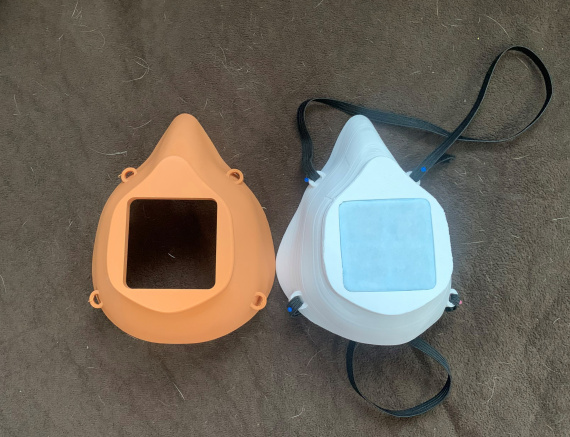
During the COVID-19 pandemic, athletic trainers have stepped up to help their communities and local health care systems in multiple ways, including screening, telemedicine and infrastructure. NATA will share what athletic trainers everywhere are doing to care for their patients, communities and themselves during this time.
Like many other athletic trainers during the COVID-19 pandemic, Charissa Smith, MBA, ATC, ITAT, was pulled out of her local Idaho high school by the hospital that employed her in March as lockdowns went into place. Screening patients at the hospital placed Smith on the front lines, causing her to become more aware of the personal protective equipment (PPE) shortage happening around her, putting her and her network of coworkers, family and friends at a higher risk of contracting the coronavirus.
“In my mind, I was going from working with an extremely healthy population to being on the front lines of this pandemic,” Smith said.
Then, she saw an article about a 3D-printed mask created by a dentist in Montana, and it clicked – she has a 3D printer, a husband who is a PhD candidate in computer science and physics and connections to be able to provide front-line workers with more protection.
Smith’s husband printed a mask for her using PLA (a widely used plastic filament material called polylactic acid) and their 3D printer, and she took it to her hospital’s chief medical officer to offer more masks to hospital staff. Through working with the chief medical officer and a small task force, Smith conducted research to ensure the masks are N95-equivalent and provide proper protection.
The masks, once printed, are moldable to the wearer’s face after boiling or baking the finished product, creating a more secure fit offering the most protection possible. The masks are also made with a “window” to slide in an N95-equivalent filter. Elastic to secure the masks to the face and the filters, Smith said, are easily accessible at a local hardware store.

With the dentist’s pattern and permission to print the masks, and access to the right filters to insert, Smith partnered with a local museum with access to a commercial 3D printer to produce larger quantities of masks at one time. In total, 300 masks were printed and donated to first responders in Smith’s community in Idaho.
“We had the capability and the network to be able to help out with that need,” Smith said.
Since donating to her local community, Smith and her husband have continued to print masks for anyone interested. They have experimented with colors and styles – from color-changing and rainbow masks to a series of “Star Wars”-themed masks. Her husband, she said, is in the process of printing a mask to look like Bane, a supervillain in the “Batman” franchise.

Now, four months after the pandemic began, Smith has returned to her local high school to treat student athletes, while continuing to work alongside orthopedic doctors and physicians at the hospital and making masks.
“It was very motivating whenever I found something I could do to help protect my coworkers, my friends, my family and myself, to be able to have the appropriate piece of PPE; just one more level of defense that I can tangibly do to help,” she said.





